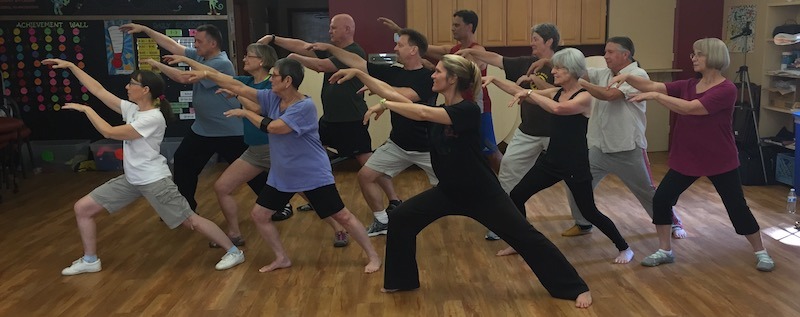The Health Benefits of Qigong

Qigong (pronounced “chee-gung”)
Qi (life-breath) Cultivation is an aspect of Chinese medicine involving the coordination of different breathing patterns with various physical postures and motions of the body.
Qi means breath or gas in Chinese, and, by extension, the energy produced by breathing that keeps us alive; gong means work applied to a discipline. Qigong is then “breath work” or the art of managing one’s breathing in order to achieve and maintain good health and to enhance the energy mobilization and stamina of the body in coordination with the physical process of respiration.

Qigong is the overarching discipline of which Tai Chi comes under—Tai Chi is a form of Qigong, but Qigong is not a form of Tai Chi. Qigong is more ancient and considerably more diverse than Tai Chi. There are reported to be several thousand different styles and schools of Qigong. The distinguishing factor is that Qigong does not involve any martial application, whereas Tai Chi is rooted in martial practice. Read more about the difference between Tai Chi and Qigong.

Qigong Practice
The art of Qigong consists primarily of physical movement, relaxation, breathing exercises, mind-body integration, and meditation. The objective of the exercises is to strengthen the Qi in the body and remove obstructions to Qi flow that may have developed due to injury, emotional states, diet, disease, or other factors. Conversely, obstruction of Qi flow can also produce disease, emotional obstructions, and tension.
Can Qigong Help Prevent Illness?
Qigong is mostly taught for health maintenance purposes, but there are also some who teach it as a therapeutic intervention. Various forms of traditional qigong are also widely taught in conjunction with Chinese martial arts.
Research has demonstrated consistent, significant results for a number of health benefits in randomized controlled trials (RCTs), evidencing progress toward recognizing the similarity and equivalence of Qigong and Tai Chi. One such study was published by The National Institute of Health (NIH)
Regular practice of Qigong can: prevent and treat illness, reduce stress, establish balance, integrate mind/body/spirit, bring peace, help regain flexibility with slow, gentle, non-impact motions, improve blood circulation, and many other healing positives.
Qigong for Health
A large number of studies are cited in an article by the Qigong Institute showing the benefits of Qigong and Tai Chi done as Qigong for a very wide range of health challenges and chronic conditions including, but not limited to, bone health, cardiopulmonary fitness, physical function, falls risk and balance, general quality of life, immune function and inflammatory responses, management of cancer, chronic obstructive pulmonary disease, Parkinson’s disease, cardiac and cardiovascular disease, mortality and stroke, blood pressure, stress and disease, heart function and microcirculation, asthma, respiration, allergies, neuromuscular disorders, cancer, use of drugs, anxiety, depression, and self-efficacy.

Is it Possible to Learn Qigong Online?
Yes! There are a variety of virtual Qigong lessons available using several different technologies, Zoom, LinkedIn, Facebook Live, online video platforms and others.
Some classes focus on very simple movements for those who are seeking a very basic practice with a minimal learning curve. Others focus on deep visualization and breathing techniques—digging deep into the healing aspects of Qigong’s Traditional Chinese Medicine (TCM) roots. And some are an approachable balance of physical and energetic movement. Qigong is taught with an emphasis on relaxation, breathing, stress reduction, and increasing balance and flexibility.
The key is to find an instructor whose teaching is well suited to your goals and personality. Also, consider the platform being used for online Tai Chi. Some platforms deliver more of an experience similar to watching an instructional DVD or webinar. Others strive to replicate the experience of attending a live in-person class with classmate and instructor collaboration in an online meeting style environment.
